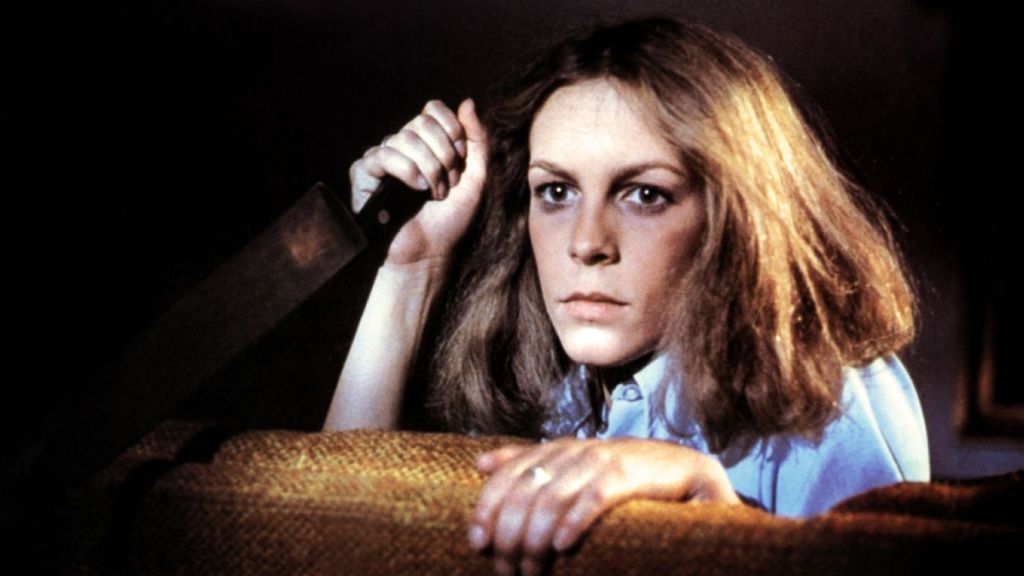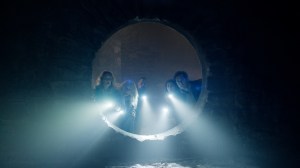John Carpenter’s 1978 horror benchmark, Halloween, unleashed a cinematic bogeyman so gruesome that Michael Myers continues to fuel nightmares and fan theories nearly five decades on. The Shape’s relentless terror in Haddonfield is legendary, a chilling display of seemingly motiveless evil. Audiences know the broad strokes of his bloody work, including the stalking of Laurie Strode (Jamie Lee Curtis) and the brutal dispatching of her friends. These elements have been part of the franchise’s many sequels (and different Halloween timelines). But nestled within the iconic first rampage is a far more bizarre and deeply unsettling act that often slips past casual viewers.
Videos by ComicBook.com
We’re talking about the moment it’s implied Michael Myers didn’t just kill a local German Shepherd, but also perhaps ate parts of it. This single, grim detail, conveyed through one chilling line of dialogue, contributes a uniquely disturbing facet to Myers’ already terrifying persona, pushing him beyond a standard slasher into something primordially savage.
[RELATED: Halloween Must Move on From Michael Myers]

The discovery unfolds as Dr. Sam Loomis (Donald Pleasence), Michael’s psychiatrist, and Sheriff Leigh Brackett (Charles Cyphers) investigate the long-abandoned Myers house following Michael’s escape from Smith’s Grove Sanitarium. The atmosphere is thick with dread when they find the freshly killed body of a German Shepherd named Lester. Promptly, Dr. Loomis delivers the bone-chilling explanation for the state of the animal’s remains. Looking at the scene, Loomis gravely states, “He got hungry.”
Halloween offers no graphic depiction or flashback to the act itself. There’s just the grim tableau and Loomis’s stark, horrifying pronouncement. This deliberate restraint, a hallmark of Carpenter’s directorial style in the original Halloween, forces the audience’s imagination to paint the grisly picture. The scene’s subtlety means the dog-eating event is a detail easily missed or perhaps not fully processed on an initial viewing. Yet, it adds a layer of animalistic desperation or cruelty, making Michael even more alien and frightening.
Did Michael Myers Really Eat a Dog in 1978’s Halloween?

The ambiguity surrounding what happened to Lester the dog has become a recurring topic in horror communities, with fans on platforms like Reddit offering a spectrum of interpretations. Many Halloween fans take Dr. Loomis’s assessment – “He got hungry” – as the literal truth, suggesting a desperate act of survival from an escaped patient. Reddit user Horrorfan5 posits a straightforward scenario: “He was hungry. Can’t go to a store. There are no other animals in the suburbs aside from squirrels.” This view frames Michael as an opportunistic predator, resorting to whatever is available to fuel his mission. User juwanna-blomie concurs, suggesting the act was “Just a means to be able to keep killing.” In this light, the dog becomes unfortunate collateral damage, a mere resource for a creature focused on a larger, more human-centric rampage. This interpretation emphasizes that Michael is driven by basic needs when not fixated on his specific human targets.
However, not all fans are convinced by the literal dog-eating angle, especially given Michael’s known history and capabilities. As user cyberpunk1Q84 argues, “Michael just spent the last 15 years eating regular meals at the mental facility, so unless they’ve been feeding him dog, I don’t think he’s got the taste for it. […] People fast for that long with no problem; he was definitely not hungry enough to eat a dog.” This user speculates that Michael “probably killed the dog and some rats started eating the corpse and scrambled when Loomis and Sheriff Brackett got there,” suggesting Loomis might have jumped to a gruesome conclusion.
Another popular alternative interpretation, offered by fooliescraper, is that Loomis’s line is metaphorical: “I’ve always interpreted it as ‘hungry’ for the kill. He’s got a hunger for murder. Loomis is odd enough to phrase it that way.” This reading recasts the line as a commentary on Michael’s insatiable bloodlust, with the dog’s death being another expression of his violent nature rather than a desperate meal. The fact that Michael demonstrates the ability to drive a car and meticulously plan his stalks further complicates the “just hungry” narrative for some. LocalLankyLad, the original poster of the thread, voices this common point of confusion: “I still think that if he’s breaking into people’s houses and murdering them, he could check the cupboards or fridge for some snacks after rather than go straight to the dog.”

[RELATED: The Top 10 Slasher Movie Sequels, Ranked]
Despite the motive, the act is a powerful signifier of Michael’s profound detachment from humanity. Killing a dog, an animal often regarded as a loyal companion, is inherently disturbing. User Brockomon22 touches on this, stating it “Probably also shows his complete lack of humanity… Not as in evil, just no sense of empathy for a creature that humans (in the US anyway) naturally bond with. He was hungry and it’s food.” The scene highlights Michael’s alien nature, as societal norms and emotional connections mean nothing to him. So, it’s fair to assume the filmmakers were likely aware of the visceral impact such an act would have.
The enduring discussion around this off-screen event underscores the brilliance of Halloween‘s less-is-more approach. Carpenter and co-writer Debra Hill tapped into a primal fear by merely suggesting such a grotesque act, allowing each viewer’s imagination to construct the horror. The dog incident contributes significantly to the aura of “pure evil” that Dr. Loomis attributes to Michael, an evil that is not only murderous but also capable of acts that feel fundamentally wrong on an almost instinctual level.
What is your interpretation of the events surrounding Lester the dog in Halloween? Does this incident make Michael Myers even more terrifying to you?








